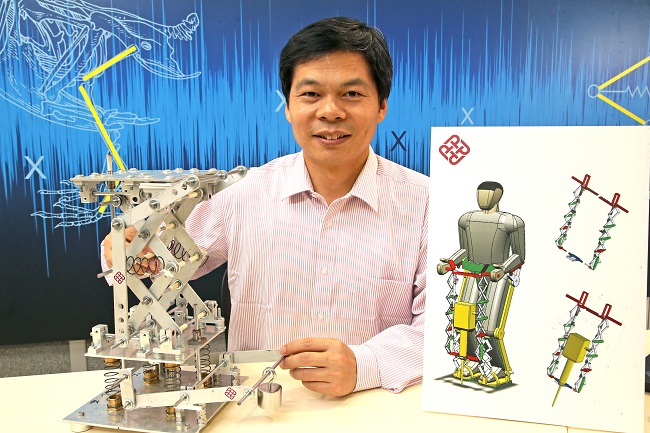Dr Jing Xing-jian
Hong Kong – In the construction industry, the long-term mechanical vibration experienced by workers operating mechanical systems may cause discomfort, fatigue, injuries and even occupational disabilities. As such, anti-vibration measures are important for the health protection of construction workers.
This is the reason behind the invention of a bio-inspired nonlinear anti-vibration system by Dr Jing Xing-jian and his team from the Department of Mechanical Engineering at The Hong Kong Polytechnic University (PolyU).
Winning the prestigious TechConnect Global Innovation Awards 2017, the novel system can reduce mechanical vibration dramatically, providing more reliable performance and better cost-efficiency than any existing technology in this aspect.
Vibration is usually controlled through two types of systems. Passive vibration control systems isolate or mitigate vibration through equipment such as rubber pads, shock absorbers and mechanical springs. In contrast, active vibration control systems apply equal force or energy in opposition to the vibration force. The less complex and more reliable passive systems are more commonly used in engineering practice because their lower manufacturing, operating and maintenance costs as well as their requirement of less energy. However, they do not control vibration as effectively as active systems.
This challenge has driven the PolyU research team to study the limb structures of animals and insects in relation to vibrational motion control. Researchers were inspired by the woodpeckers’ motion of hammering into wood hundreds of times a day without having concussion. The team then developed an X-shaped anti-vibration structure that combines the benefits of both passive and active systems. It demonstrates nearly zero response to any vibration, providing quasi-zero low dynamic stiffness while maintaining high loading capacity. The unique nonlinearity of the system design also allows it to automatically provide high damping for strong vibration and low damping for small vibration.
Researchers have applied this innovation to solve the problem in the construction industry and developed an assistive anti-vibration exoskeleton for handheld jackhammers. The invention can suppress vibration from drilling concrete to safe levels, providing unparalleled anti-vibration effect in preventing hand and arm problems among construction workers. Adding to the system’s cost-effective advantage in manufacturing and maintenance is its design flexibility for wide application in devices of various sizes and materials beyond vibrating tools.
